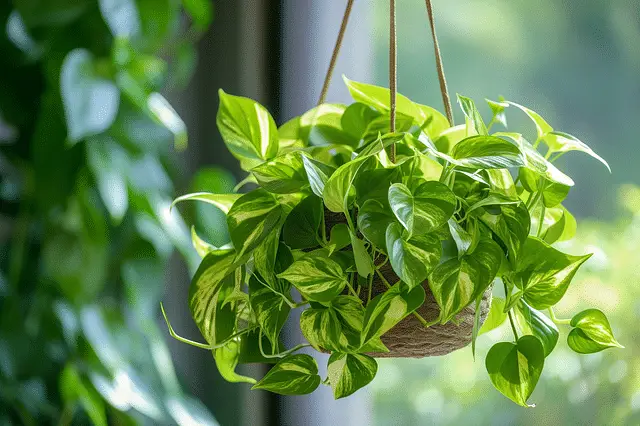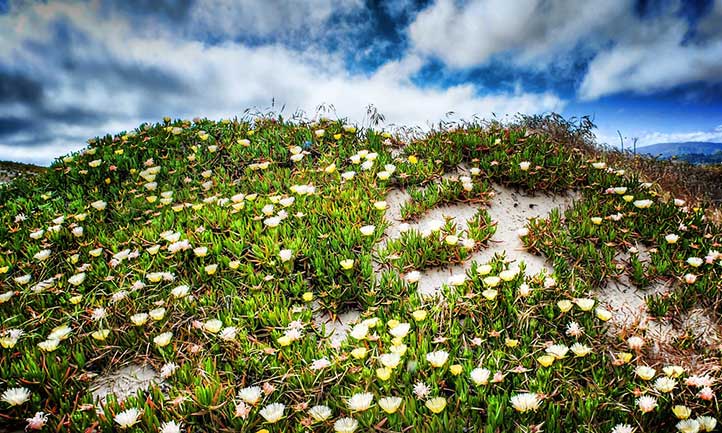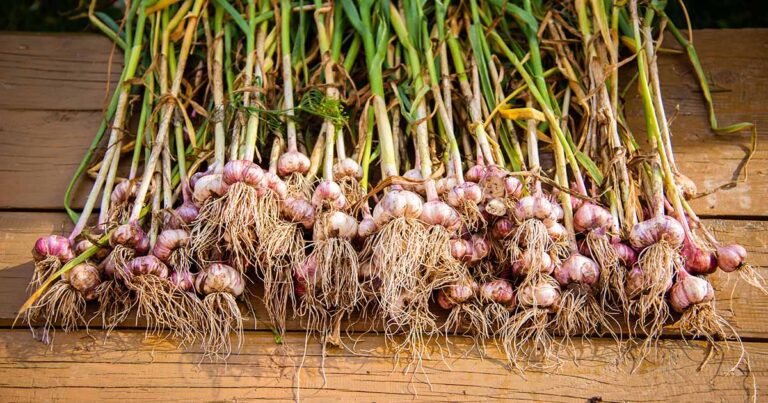Columbine Flowers: Planting and Care Guide
Table of Contents
Benefits of Growing Columbine Flowers
Columbine flowers are not only a stunning addition to any garden, but they also offer a multitude of benefits that make them a must-have for gardening enthusiasts. These beautiful flowers come in a variety of colors and shapes, adding a vibrant and whimsical touch to your outdoor space. Beyond their aesthetic appeal, columbines are also known for their ability to attract pollinators such as bees, butterflies, and hummingbirds. By planting columbine flowers, you can create a pollinator-friendly habitat that supports the ecosystem and promotes biodiversity in your garden.
Moreover, columbine flowers are relatively low-maintenance plants, making them an ideal choice for both novice and experienced gardeners. Their hardy nature allows them to thrive in various conditions, from full sun to partial shade, making them versatile and adaptable to different environments. Additionally, columbines are known for their long blooming period, providing you with months of colorful blooms to enjoy throughout the growing season. Whether you’re looking to enhance the aesthetic appeal of your garden or create a haven for pollinators, growing columbine flowers offers a range of benefits that make them a valuable addition to any outdoor space.

Ideal Growing Conditions for Columbine Flowers
Columbine flowers thrive in ideal growing conditions that mimic their native habitats. These exquisite flowers prefer dappled or partial shade, making them perfect for woodland garden settings or areas with filtered sunlight. While they can tolerate some sunlight, they generally perform best in locations that shield them from intense afternoon rays, especially in warmer climates.
In terms of soil, columbine flowers prefer well-draining, slightly acidic soil with a pH range of 5.8 to 6.8. They also appreciate soil that is rich in organic matter, which aids in moisture retention while allowing excess water to drain away. Additionally, columbines are adaptable to various soil types, from sandy loam to clay, as long as the soil is not waterlogged. By providing the right balance of light and soil conditions, you can ensure that your columbine flowers flourish and grace your garden with their unique charm.
Choosing the Right Location for Planting Columbine Flowers
When selecting the right location for planting columbine flowers, it is essential to consider their preferred growing conditions. Columbines thrive best in partially shaded areas, receiving morning sunlight and afternoon shade. This balance of light helps prevent the flowers from drying out or wilting in excessive heat. Additionally, columbines prefer well-draining soils rich in organic matter to support their growth and development.
It is also important to place columbine flowers in a location protected from strong winds. Wind can damage the delicate blooms and interrupt pollination by dispersing pollen prematurely. By choosing a sheltered spot for your columbines, you can ensure their longevity and vigor throughout the growing season. Be mindful of surrounding structures or plants that may create wind tunnels and reposition your columbines accordingly for optimal growth.
When selecting the ideal location for planting Columbine flowers (Aquilegia spp.), the following crucial factors are to be taken into account:
| Factor | Considerations |
| Sunlight | Columbine requires ample sunlight to grow and flower correctly. The ideal site should receive at least six hours of sunlight each day, with some areas receiving full sun all day long. In hot climates, its best to provide some afternoon shade to protect the plants from excessive heat. |
| Soil Type | Well-draining soil is crucial for healthy columbine growth. They can tolerate various soil types, such as clay, loam and sandy soils, but good drainage is essential. Avoid heavy clay soil and opt for humusy, well-drained soil instead. |
| Watering Requirements | Columbine requires moderate soil moisture. Keep soil consistently moist (not soggy) for young plants, and water once a week when they are established. |
| Climate | Consider your local climate. While columbine prefers a dappled-shade position in hotter climates, it does well in sunny positions (such as open meadows or alpine situations) in cooler climes. |
| Plant Spacing | Plant spacing can vary depending on the variety of columbine. Be sure to follow the recommended spacing guidelines for the specific type you’re planting. |
| Maintenance Level | Columbine has low to moderate maintenance requirements. Regular deadheading can prolong blooming, and occasional division helps maintain plant health. |
| Attracts Pollinators | Columbine flowers are beloved by many pollinators, including bees, butterflies, and even hummingbirds. Plant them where they can attract these beneficial insects. |
Preparing the Soil for Columbine Flowers
Columbine flowers thrive in well-draining soil that is rich in organic matter. Before planting, it is essential to prepare the soil to provide the ideal growing conditions for these delicate flowers. Start by removing any weeds and debris from the planting area to ensure that the columbine flowers have ample space to establish their roots.
Next, loosen the soil to a depth of at least 6-8 inches using a garden fork or tiller. This will help improve aeration and drainage, crucial for the health of columbine flowers. Incorporating compost or well-aged manure into the soil will also boost its fertility, providing the necessary nutrients for robust growth. By taking the time to prepare the soil adequately, you set the stage for healthy and vibrant columbine flowers in your garden.

How to Plant Columbine Flowers
Columbine flowers are a delightful addition to any garden, with their unique and intricate blooms adding a pop of color and interest. To plant Columbine flowers successfully, start by selecting a location that receives partial shade to full sun. These flowers prefer well-draining soil, so amend heavy clay or compacted soil with organic matter like compost to improve drainage.
When planting Columbine flowers, ensure the soil is moist but not waterlogged. Dig a hole slightly larger than the root ball of the plant and gently loosen the roots before placing it in the hole. Backfill with soil, pressing gently to remove air pockets. Water the newly planted Columbine thoroughly to help settle the soil around the roots. Consider spacing the plants about 12-18 inches apart to allow for adequate air circulation and growth.
Watering Needs for Columbine Flowers
Columbine flowers, scientifically known as Aquilegia, are known for their delicate and intricate blooms, making them a popular choice among gardeners. When it comes to watering these beautiful flowers, it’s essential to strike the right balance. Overwatering can lead to root rot, while underwatering can cause stress and hinder growth.
A general rule of thumb for watering columbine flowers is to keep the soil consistently moist but not waterlogged. In most cases, providing about 1 inch of water per week, either through rainfall or irrigation, should be sufficient. However, during hot and dry periods, it may be necessary to increase the frequency of watering to prevent the soil from drying out completely. Monitoring the soil moisture levels regularly and adjusting your watering schedule accordingly will help ensure the health and vitality of your columbine flowers.
Here’s a summary of the watering needs for Columbine flowers (Aquilegia spp.):
| Watering Needs | Guidelines |
| Young Plants | Keep the soil consistently moist but not waterlogged until the plants establish themselves. |
| Established Plants | Water once a week, ensuring the soil remains moderately moist. |
| Avoid Overwatering | Columbine dislikes soggy soil, so avoid excessive watering. |
Remember that adjusting watering frequency based on local climate, soil type, and specific columbine varieties is essential for their health and vitality.
Fertilizing Columbine Flowers
Fertilizing Columbine flowers is vital to ensure optimal growth and blooming. These perennials benefit from a balanced fertilizer with equal parts of nitrogen, phosphorus, and potassium. A general-purpose granular fertilizer with an N-P-K ratio of 10-10-10 works well for Columbines. Applying this fertilizer in early spring as new growth emerges can support healthy development and vibrant blooms throughout the growing season.
Over-fertilizing Columbine flowers can lead to excessive foliage growth at the expense of flower production. It’s essential to follow the recommended dosage on the fertilizer label to prevent nutrient imbalances. Too much fertilizer can also make the plants more susceptible to diseases and pest infestations. Remember, a moderate and consistent fertilization regimen is key to promoting the overall health and beauty of your Columbine flowers.

Pruning and Deadheading Columbine Flowers
Pruning and deadheading Columbine flowers are essential practices to maintain the health and vibrancy of these beautiful plants. Pruning helps to shape the growth of the plant and encourages the development of new blooms. Deadheading, on the other hand, involves the removal of faded or spent flowers to promote continuous flowering throughout the season. By regularly pruning and deadheading your Columbine flowers, you can enhance their overall appearance and prolong their blooming period.

When pruning Columbine flowers, it is important to use clean, sharp scissors or pruning shears to make precise cuts. Remove any dead, damaged, or overgrown stems to improve air circulation and prevent the spread of diseases. For deadheading, simply pinch off the faded flowers where they meet the stem to encourage the plant to focus its energy on producing new blooms. By incorporating these practices into your gardening routine, you can help your Columbine flowers thrive and contribute to a more visually appealing garden space.
Here’s a guide on pruning and deadheading Columbine flowers (Aquilegia spp.):
| Action | When to Do It | How to Do It |
| Deadheading | Throughout the summer blooming season, snip off the spent flowers before they ripen into seed pods. Make the cut right at the base of the flower head and discard the clippings. | Use sharp pruning shears or scissors to remove the faded flower stalks. This encourages more blooms throughout the growing season. |
| Trimming for Shape | After columbine finishes blooming in early summer, trim the plants. This allows them time to regrow before winter. | Cut back any leggy growth or unruly stems to maintain a neat appearance. Remove dead or diseased foliage, ensuring you cut back to healthy tissue. |
Remember that proper pruning and deadheading help keep your columbine plants healthy and encourage continuous flowering.
Dealing with Common Pests and Diseases of Columbine Flowers
Columbine flowers are generally hardy plants, but like any other botanical treasures, they are susceptible to certain pests and diseases. Aphids can sometimes be a nuisance for columbines, sucking the sap from the leaves and stems and causing them to wilt. Keep an eye out for these tiny, pear-shaped insects and consider using insecticidal soap as a natural remedy to control their population. Additionally, powdery mildew, a common fungal disease, can appear as a white powdery substance on the leaves of columbines. To combat this issue, ensure proper air circulation around the plants and consider fungicidal sprays if the problem persists.
Another potential pest that columbine flowers may encounter is the columbine leaf miner. These tiny larvae tunnel through the leaves, creating unsightly brown patches. If you notice these miners, promptly remove and destroy the affected leaves to prevent the spread of the infestation. Neem oil can also be used as a natural insecticide to deter these pests. By staying vigilant and addressing any pest or disease issues promptly, you can help your columbine flowers thrive and flourish in your garden.
Here’s a table showing common pests and diseases that can affect Columbine flowers:
| Pest or Disease | Description | Impact | Control Measures |
| Columbine Leafminer | Small, dark-colored flies native to North America. The species Phytomyza aquilegivora creates serpentine trails in the leaves. | Usually cosmetic damage; doesn’t impact plant health. | Chemical controls are generally not recommended. Affected leaves can be picked off and destroyed. Native Aquilegia canadensis is less affected. |
| Columbine Sawfly | Larvae of sawflies feed on columbine leaves, causing visible damage. | Affects plant appearance; generally not lethal. | Prune affected leaves after blooming. Shearing is an effective control method. |
| Aphids | Small insects that suck plant sap. | Distort leaves and weaken plants. | Use insecticidal soaps or oils. |
| Botrytis | Fungal disease causing gray mold on leaves. | Can lead to leaf spots and stem rot. | Maintain good air circulation. Remove affected plant parts. |
Remember that regular preventive maintenance is essential for organic pest and disease control.
Dividing and Transplanting Columbine Flowers
Columbine flowers can benefit from being divided and transplanted occasionally to maintain their vigor and promote optimal growth. Dividing columbines is a straightforward process that involves digging up the plant, separating the root ball into sections, and replanting them in new locations. This method can help rejuvenate overcrowded columbines, encourage new growth, and prevent the plants from becoming leggy or sparse.
When transplanting columbine flowers, it is essential to choose a location that provides the right light conditions and soil preferences for these plants. Ensuring the transplanted columbines receive adequate sunlight and well-draining soil will help them establish quickly and thrive in their new environment. Additionally, regular watering and monitoring for any signs of stress or transplant shock can aid in the successful acclimatization of columbine flowers to their new surroundings.

Overwintering Columbine Flowers
To ensure the successful overwintering of your columbine flowers, it is essential to provide them with proper protection from harsh winter conditions. Columbines are known for their hardiness, but they can benefit from some extra care during the colder months. One way to protect your columbines is by applying a layer of mulch around the base of the plants. This helps to insulate the roots and retain moisture, preventing freezing and dehydration.
Another technique for overwintering columbine flowers is to cut back the foliage after the first frost hits. Trimming the plant down to a few inches above the ground helps redirect the plant’s energy towards root growth and storage, promoting healthier regrowth in the spring. Additionally, it is important to ensure that the planting area is well-drained to prevent water accumulation, which can lead to root rot during the winter months. By following these overwintering practices, you can help your columbine flowers thrive year after year.
Here are few steps for overwintering Columbine flowers:
| Step | Description |
| 1. Mulching | Apply organic mulch (e.g., straw or shredded leaves) around the base of the plants to insulate the soil and protect roots from freezing temperatures. |
| 2. Cut Back Foliage | After the first frost, trim back foliage to about 2-3 inches above the ground. This prevents disease and allows energy to focus on root development. |
| 3. Watering | Water thoroughly before the ground freezes to maintain healthy root systems during winter. |
| 4. Cold Frames or Containers | If growing in containers, move them to a sheltered area or use cold frames for extra protection from extreme cold. |
| 5. Natural Shelter | Plant near structures (e.g., walls or fences) to shield from harsh winds and frost. |
| 6. Pest Control | Inspect for pests or diseases before winter and address any issues promptly. |
Propagating Columbine Flowers
Propagating Columbine flowers is a rewarding way to expand your garden and share the beauty of these unique blooms with others. One method of propagation is through seed collection and germination. Columbine plants produce seed pods once their flowers fade. Allow these pods to dry on the plant before harvesting the seeds. Sow the seeds in a well-draining potting mix, keeping them moist until they germinate, usually within a few weeks.

Another method of propagating Columbine flowers is through division. As Columbine plants mature, they develop clumps that can be divided to create new plants. To do this, carefully dig up a mature plant in early spring or fall, ensuring you keep as much of the root system intact as possible. Gently separate the clumps into smaller sections, each with roots attached, and replant them in suitable locations with adequate sunlight and well-prepared soil.
Attracting Pollinators with Columbine Flowers
Columbine flowers are renowned for their ability to attract a wide array of pollinators to your garden. These charming blooms produce copious amounts of nectar, which acts as a magnet for bees, butterflies, and hummingbirds. The intricate structure of the columbine flower, with its spurred petals and vibrant colors, makes it particularly appealing to these pollinators, encouraging them to visit and assist in the pollination process. By incorporating columbine flowers into your garden, you can create a welcoming environment that not only enhances the beauty of your outdoor space but also supports the vital role of pollinators in our ecosystem.
In addition to their visual appeal, columbine flowers offer a valuable food source for pollinators, contributing to the overall health and biodiversity of the environment. Bees, in particular, are drawn to the sweet nectar of columbine flowers, while butterflies are attracted to the bright hues and fragrant blooms. By cultivating columbines in your garden, you can play a part in preserving pollinator populations and promoting a thriving ecosystem. Observing these delicate creatures flitting from flower to flower can be a rewarding and educational experience, highlighting the interconnectedness of plant life and the animal world.
Companion Planting with Columbine Flowers
When selecting companion plants to grow alongside your columbine flowers, it’s essential to choose varieties that not only complement the beauty of the columbines but also provide mutual benefits in terms of growth and pest management. Some excellent companion plants for columbine flowers include:
– **Lavender**: Known for its aromatic fragrance and beautiful purple blooms, lavender not only attracts pollinators to your garden but also deters pests like aphids and mosquitoes.
– **Delphiniums**: These tall, majestic flowers pair well with the delicate blooms of columbines, creating a dynamic visual appeal in the garden. Delphiniums also attract bees and butterflies, enhancing pollination for all surrounding plants.

Creative Ways to Enjoy Columbine Flowers in Your Garden
One creative way to enjoy columbine flowers in your garden is by incorporating them into a whimsical fairy garden. Due to their delicate and intricate appearance, columbines can add a touch of magic to miniature landscapes. Create a fairy-sized oasis by planting columbines alongside miniature accessories like tiny houses, bridges, and fairies, transforming your garden into a enchanting realm that will captivate both young and old alike.
Another way to enjoy columbine flowers is by crafting stunning floral arrangements that showcase their unique beauty. Cut columbine blooms at their peak freshness and combine them with other flowers from your garden to create striking bouquets or centerpieces. Their graceful appearance and array of colors make them a versatile addition to any floral arrangement, adding a touch of elegance and charm to your indoor space. Experiment with different color combinations and textures to create eye-catching displays that highlight the beauty of columbine flowers.
To Know More About Planting And Care For Columbine Flowers, Watch This Video!
Can columbine flowers be grown in containers?
Yes, columbine flowers can be grown in containers as long as the container is large enough to accommodate the plant’s root system and the soil is well-draining.
Are columbine flowers deer-resistant?
Columbine flowers are generally considered deer-resistant, but there is no guarantee that deer won’t occasionally nibble on them if food is scarce.
Can columbine flowers be grown indoors?
While columbine flowers are best suited for outdoor growing, they can be grown indoors in a sunny location with proper care and attention to their watering and sunlight needs.
How long do columbine flowers bloom for?
Columbine flowers typically bloom for about 4-6 weeks, depending on the variety and growing conditions.
Can columbine flowers be used in cut flower arrangements?
Yes, columbine flowers can be used in cut flower arrangements and add a unique touch to bouquets with their delicate and colorful blooms.





